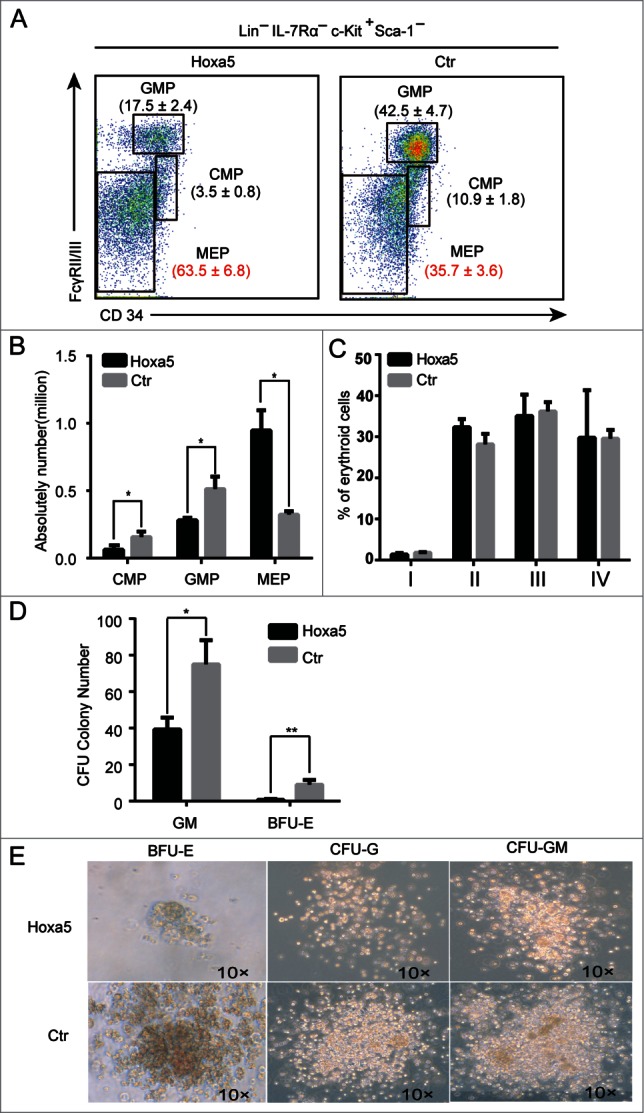Figure 3.

Increased expression of Hoxa5 results in accumulation of megakaryocyte-erythroid progenitor cells. (A) Flow cytometry analysis of erythroid and myeloid progenitors in bone marrow cells isolated from recipients transplanted with HSCs expressing Hoxa5-GFP and GFP control. Plots from one representative experiment showed the percentages of common myeloid progenitors (CMP; FcγRII/III low CD34+), granulocyte/macrophage lineage-restricted progenitors (GMP; FcγRII/III hi CD34+), and megakaryocyte erythroid progenitors (MEP; FcγRII/III low CD34-) relative to total progenitors. (B) Absolute numbers of GMP, CMP and MEP in recipients (n = 3, **, P < 0.01). (C) Erythroid differentiation is normal in recipients of Hoxa5-HSCs. Erythroid blasts at different stages of maturation in various populations based on CD71 and Ter119 markers. I, Ter119-, CD71 high; II, Ter119+, CD71 high; III, Ter119+, CD71 mid; IV, Ter119+, CD71 low. (D) Colony forming assay indicates that myeloid progenitor cells overexpressing Hoxa5 produce much fewer colonies in vitro. Two hundred progenitor cells (Lin-IL7R-cKit+sca1-) sorted from Hoxa5-GFP and GFP control mice were planted in semisolid medium. The data presented are colony numbers counted on day 8. Error bars indicate standard error. (n = 3, *P < 0.05; **, P < 0.01). (E) Representative colonies from cells expressing Hoxa5-GFP and control (GFP alone).
